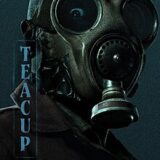
I left you hanging there a while ago; IRL (as they say) intruded into my online presence. I’m here today to wrap up Volume 1 of the Anthony Boucher Treasury of Great Science Fiction (Figure 1). Sorry about the wait, but sometimes these things happen. And it will be a couple of weeks before I can get to Volume 2 which has just as many, if not more, of my favourite pre-1960s SF. By the way, I hope my “featured image” is visible as a GIF (moving); I thought it might add a little “je ne sais quoi” to this thing of ours. (That’s a Cosa Nostra joke. I like crime movies nearly as much as genre SF/F movies.) But back to the volume. We left you at Robert A. Heinlein’s “Waldo”; one of those SF stories that manages to skirt the edges of fantasy while still remaining SF. Heinlein was, IMO, an amazing writer.
The rest of the stories in Vol. 1 are, in order:
”The Father Thing” by Philip K. Dick
”The Children’s Hour” by Henry Kuttner and C.L. Moore
”Gomez” by Cyril M. Kornbluth
”The (Widget), The (Wadget), and Boff” by Theodore Sturgeon
”Sandra” by George P. Elliot
”Beyond Space and Time” by Joel Townsley Rogers
”The Martian Crown Jewels” by Poul Anderson
and the book-length The Weapon Shops of Isher by A. E. van Vogt.
“The Father Thing” is an exploration of the replacement people—“pod people,” if you will—theme explored by Jack Finney in Invasion of the Body Snatchers, Heinlein in his Puppet Masters, etc. (Although Puppet Masters is more about controlled people than replaced people, it’s still a similar theme). Some put it down to “cold war paranoia”; I see it as typical Dickian paranoia (as typefied in Eye In the Sky); you don’t know who’s a real person or what’s real in Dick books). A young man is told to call his father in for dinner (in the Leave-it-to-Beaver 1950s, families always ate dinner together), but said he couldn’t because he didn’t know which one was his father. Of course, when the situation was investigated, no duplicate parent was found. We fans, as usual, know approximately what’s happening. In this case, there’s no explanation for the happening, just the paranoia and the quick solution. Still a lot of fun, though.
Kuttner and Moore often wrote as “Lewis Padgett,” usually for more light-hearted SF (like their “Gallagher” stories about the perennially drunk inventor). This story, published under their own names, is a more serious exploration of a theme often touched on by genre authors: what if the Earth isn’t just a planet? What if it’s (in this case) a playground or training ground for higher-level beings? (Other what-ifs can include “a feeding ground for aliens,” “an egg for a giant embryo bird,” a “rest-area for troops fighting a galactic war,” and many even more outré ideas.) A man who has to undergo psychological evaluation for security reasons is found to have a blocked area in his memory; as his mind is worked on, certain things come to light involving a certain young lady named Clarissa. There are almost Dickian levels of complexity here.
“Gomez,” by Cyril Kornbluth, is about a young mathematical wizard from Puerto Rico who wants to improve his knowledge about certain atomic reactions, and who has worked out certain classified sequences on his own. Well, given the paranoia of the post-war era, you can understand how the government would react to a letter laying out secret information. Gomez is immediately co-opted to work on atomic energy, as his brain is on a higher registry than anyone currently doing said research. But is it possible to burn out such a brain by working it too hard? A fun little story, and told by a youngish master of SF who died way too young.
I idolized Theodore Sturgeon’s writing from the moment I read a story called “Baby is Three” in a 1953 collection called Children of Wonder, edited by “William Tenn” (Phil Klass). (Of course, I read it in the late 1950s; I wouldn’t have seen it in 1953, as I was in England at the time.) It was a story about Homo Superior, and was later turned into a novel called More Than Human. One thing that distinguished Sturgeon’s writing for me was the human nature of his characters; they were more than two-dimensional, existing only for the moment, as so many SF characters and protagonists are. The (Widget) and the (Wadget) are untranslateable alien words, and Boff is a character known only to Robin Martin, a three-year-old living in a boarding house run by the Bittlemans, in a small town. Unbeknownst to the boarders, they are being studied to see if human beings possess an item called “Synapse Beta Sub-Sixteen”; populations that don’t possess that reflex are usually doomed. This novella-length story tells about the Bittlemans’ boarders, including Robin and his mother Sue, and the interactions between and among them all. It’s a gem of a story. I wish I’d met Sturgeon more than once.
“Sandra,” by George P. Elliot, is a bold story for the time, as it deals with slavery; in the time of the book, it appears to be a recognized social component similar to the American colonies’ indenturement, where you can offer yourself as a slave for a certain period, or indefinitely. There are legal issues here, setting out both the slaves’ and the owners’ rights and obligations which, by the way, include copulation, manumission and, even, death. Sandra has offered herself, and has been bought, by the protagonist, who has need of a personal slave. The lessons they both learn are laid out in this story. I found it a bit scary, myself. Of course, it’s social commentary, but a lot broader and more prima facie than most fictional commentary.
Joel Townsley Rogers’ “Beyond Space and Time” is an “idea” story; one that I’m afraid hasn’t survived the intervening years all that well. It’s well-enough told, but comes off, for me, as extremely quaint. Because it’s so weak, I’m left wondering how it got into an anthology this strong, where most of the stories have managed to stay readable, if not necessarily relevant. But there it is. It’s a story of the first intergalactic rocket flight, built and made by the smartest guy in the world. Well, smart in many ways, but dumb in others.

Poul Anderson has written all sorts of SF/F novels and short stories; this one, “The Martian Crown Jewels,” is in a humourous vein. It’s a pastiche and a gentle send-up of the Sherlock Holmes stories by Arthur Conan Doyle, and it’s done very well. In this case, the Great Detective is a Martian (and a very birdlike one who wants to emulate Holmes) who is called in when the Martian Crown Jewels, which had been borrowed by the Smithsonian for an exhibition, vanished on their way back to Mars. It’s a classic “locked room” story in that there was no conceivable way the jewels could have been stolen, yet they were. Anderson lays the story and its solution out in a way that would have done credit to The Master himself.

And now we come to the second novel in this volume; this one is A.E. van Vogt’s The Weapon Shops of Isher. It’s a broad, sweeping book, detailing the workings of a future seven or so thousand years farther in time than the present day. The planet is a monolithic culture, ruled by the generational Isher family; the present empress (in the year 4750 of Isher rule) Innelda is the 180th of her name. The book starts with a prologue, where a weapons shop appears on a street in “Middle City” in 1951. Its illusion-sign, reading “The Right to buy Weapons is the Right to be Free” is visible as if head-on when viewed from any angle. A reporter, Chris McAllister, is able to enter this shop, even though the door wouldn’t open previously when a police inspector tried it. Upon McAllister’s entrance, the shop—and McAllister—vanished as if they were never there.
McAllister learns that the weapon shop, from seven thousand years in his future, was transported there because the Imperium had brought heavy atomic weapons to bear on the shop—but because of the weapon shops’ protection, all the atomics had been able to do was dislodge the shop from its time and send it temporarily back to the far past. McAllister is given an insulated suit and sent out of the shop, to become a fulcrum on which the shop personnel, headed by Peter Cadron, hope to return to their own time.
Back in 4750 Isher, Fara Clark, loyal subject of the Empress, who lives in a small village—most villages in Isher are small, though there is an Imperial City—where he owns and operates an atomic repair shop, servicing various atomic implements used by the villagers. He discovers that a weapons shop—one of those that don’t swear allegiance to her Imperial Majesty.
The novel goes on to detail the inner workings of the Imperium, where Captain Robert Hedrock, who is not known to be, but is, the one immortal on the planet, attempts to keep Imperial society functioning and to return the Weapons Shops to their original role as the “loyal opposition.” Hedrock plays a dual role in the Palace and the Weapons Shops, trying to keep the Empire from destroying the shops, and the Shops from destroying the Empire. There is a balance there that he is the only person—as an immortal—knows exists and can maintain.
The book was one of my favourites growing up, along with its later-written companion, The Weapon Makers, because it’s got all the melodrama and “high SF concepts” favoured by young people. And an immortal guy. It’s only when I got a lot more reading under my belt that I realized it’s not terribly well written, as exciting as it is. It’s full of “telling, not showing,” and more than a bit of “said-bookism,” where the author tells us how a character is feeling rather than showing us the character’s reactions to those feelings. (Example: “You’ve been ignoring me,” he said to her bitterly. A better way would be something like: He scowled. “You’ve been ignoring me.” He turned away from her so she couldn’t see the hurt on his face.) That’s a poor example, but you get the point. Again, it’s an exciting book if you’re fairly young, and it has more than a few exciting 1950s SFnal concepts, but unfortunately, it does disappoint the more mature reader that I’ve become. (Okay, I’m only somewhat more mature.) Your mileage may vary, as they say.
Overall, this is a terrific first volume, and I hope to cover Volume II very soon.
Comments on my column are welcome. You can register and comment here, or on my Facebook page, or in the Facebook pages I link to. All comments, good or bad, positive or negative, are welcome! (Just keep it polite, okay?) My opinion is, as always, my own, and doesn’t necessarily reflect the views of Amazing Stories or its owner, editor, publisher or other columnists. See you next time!










